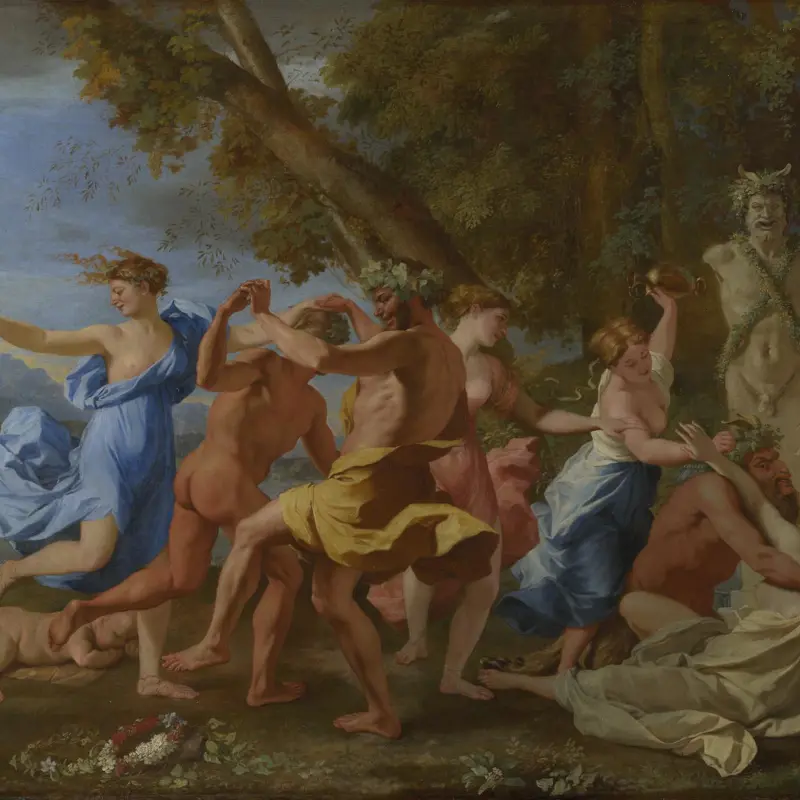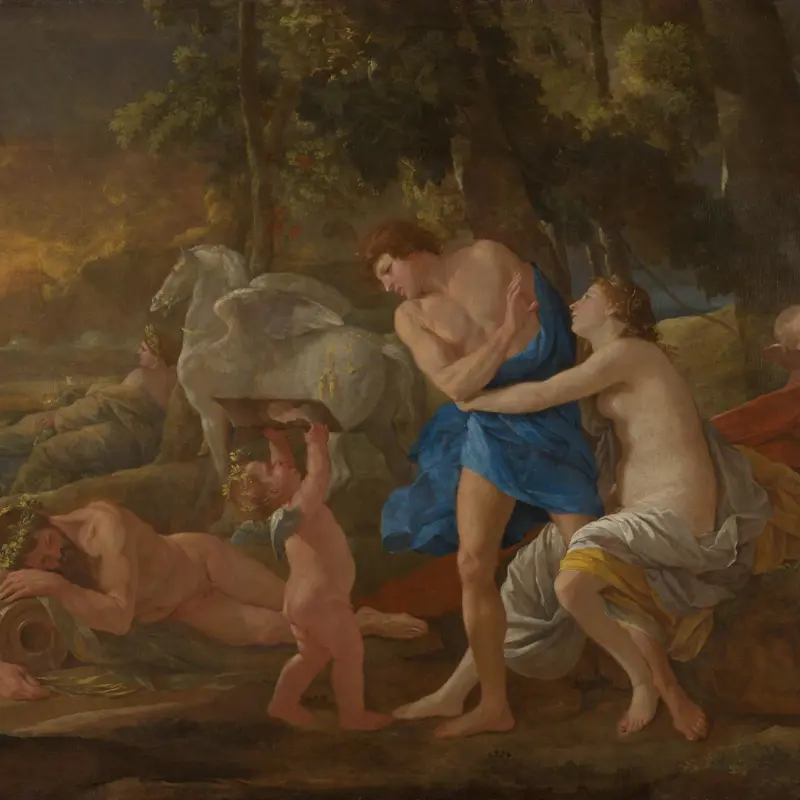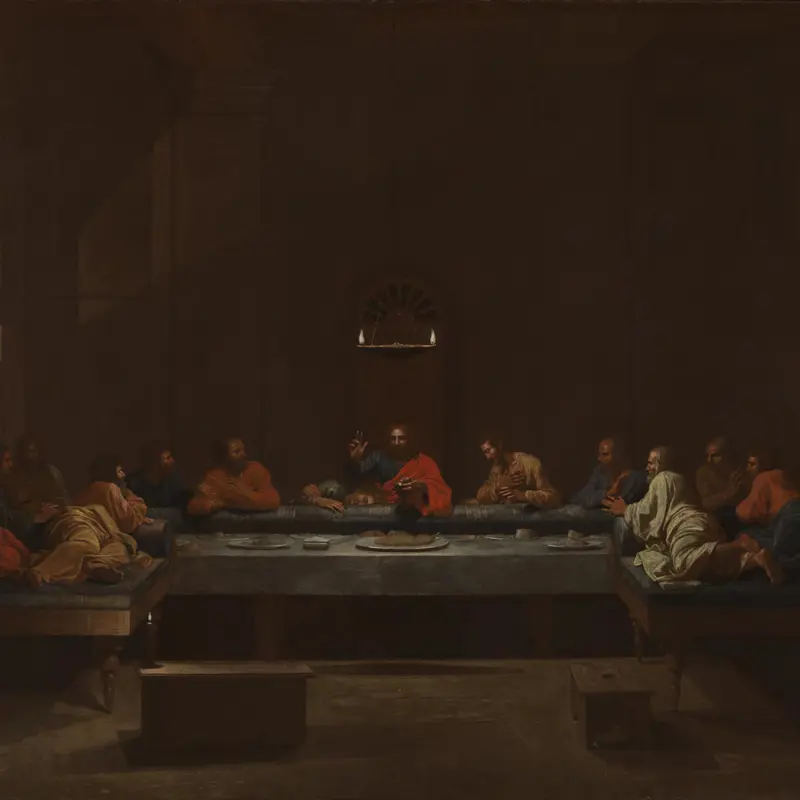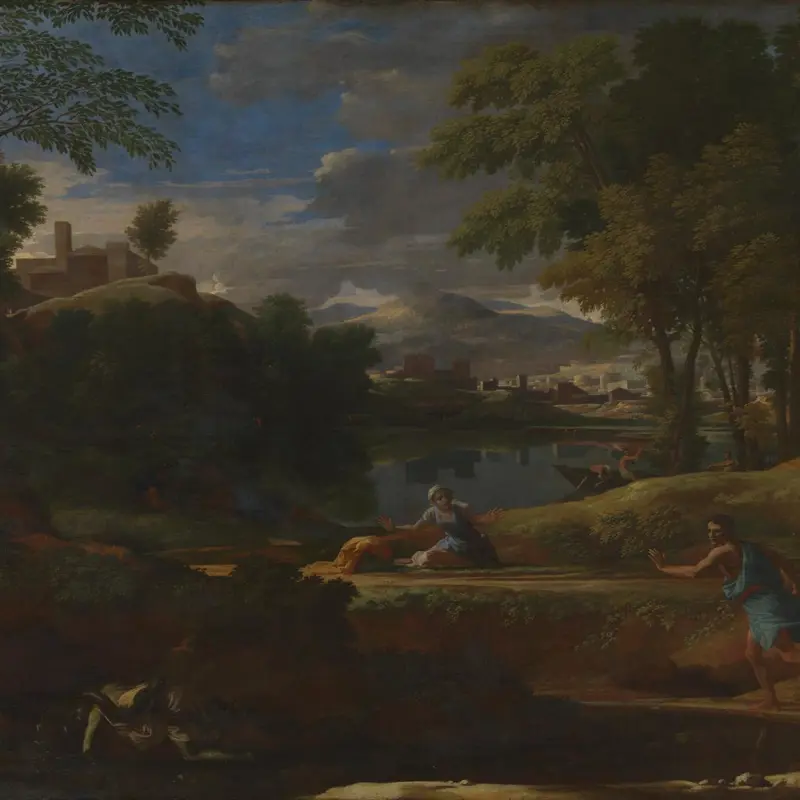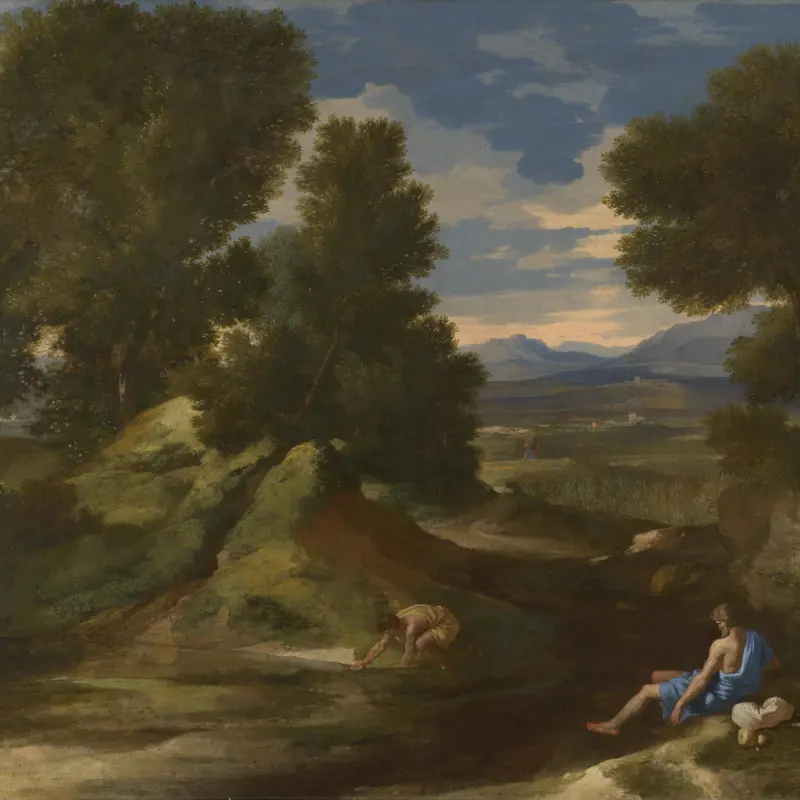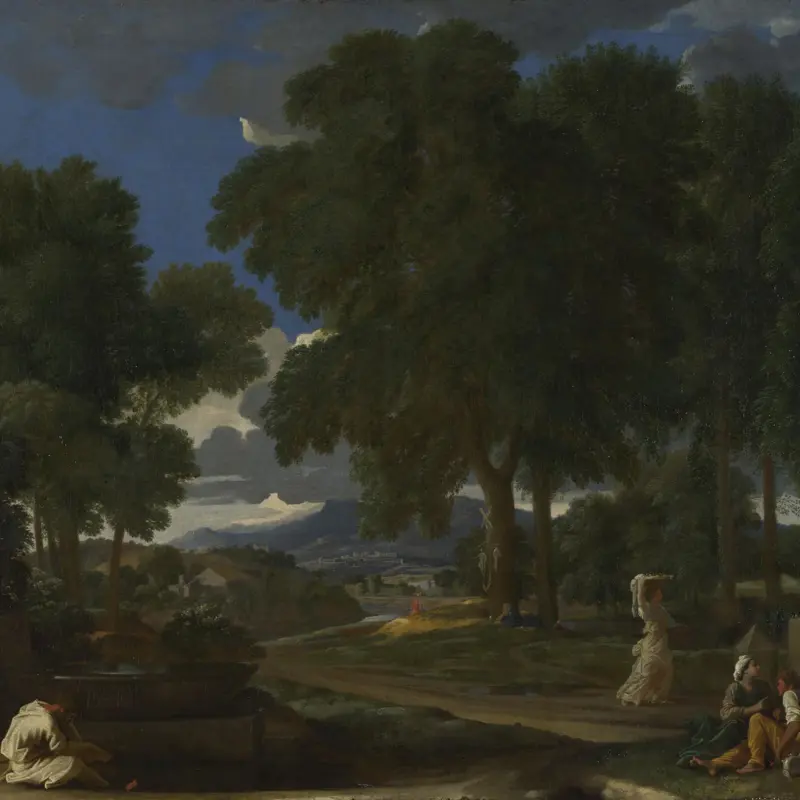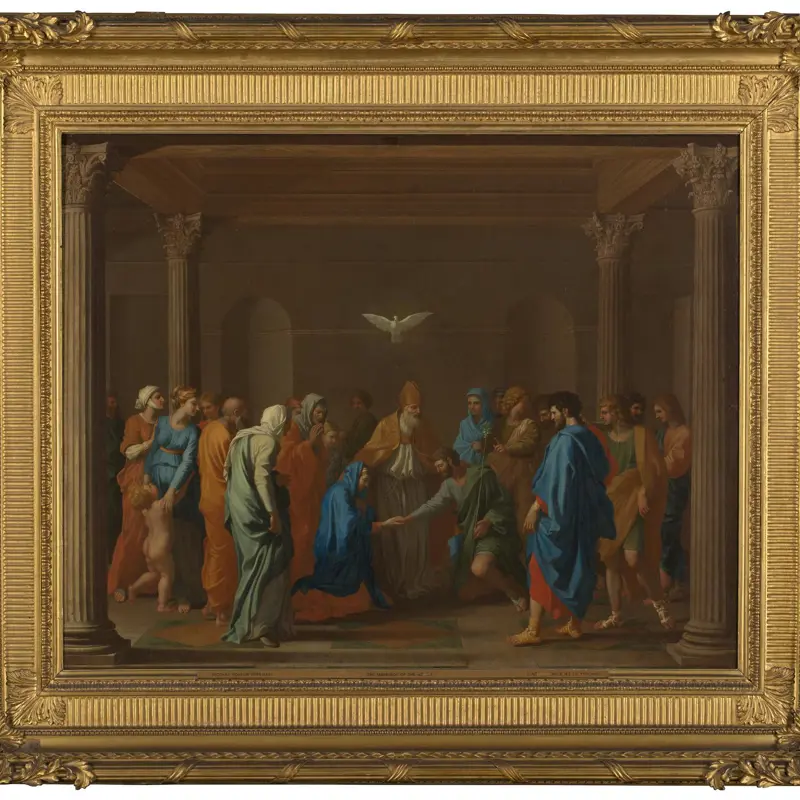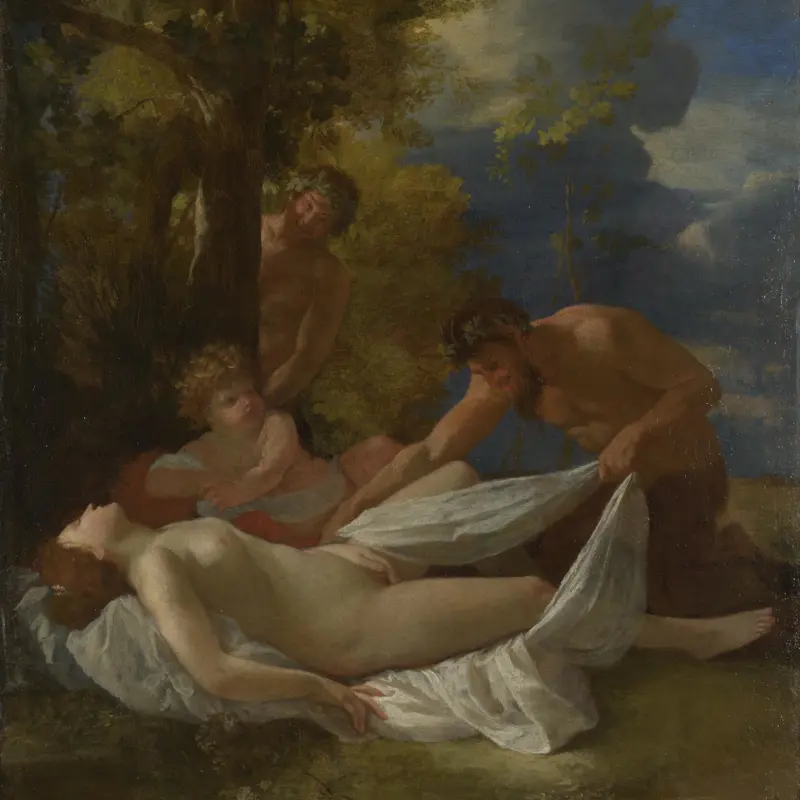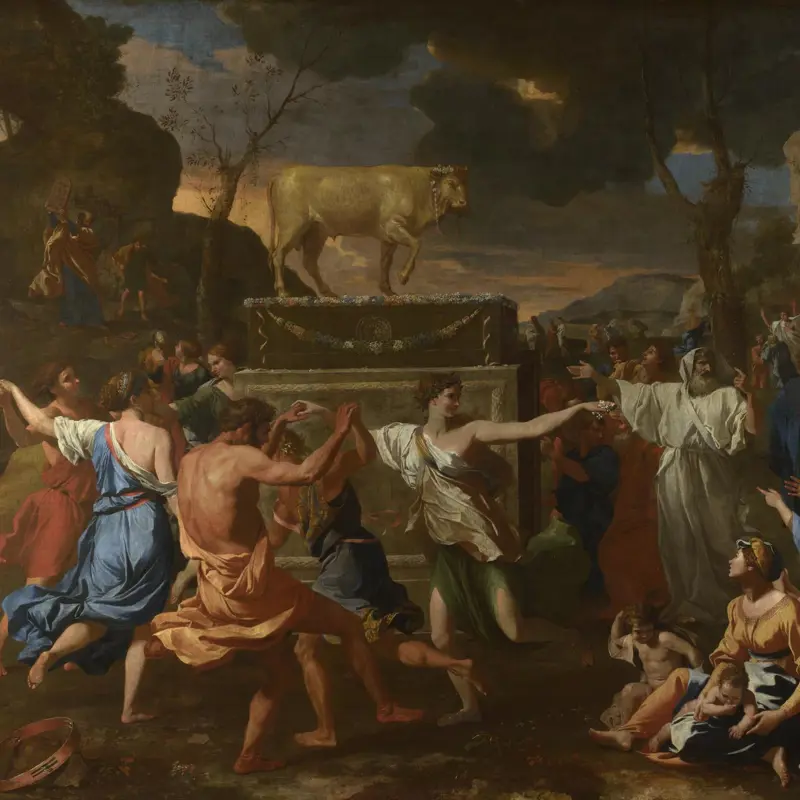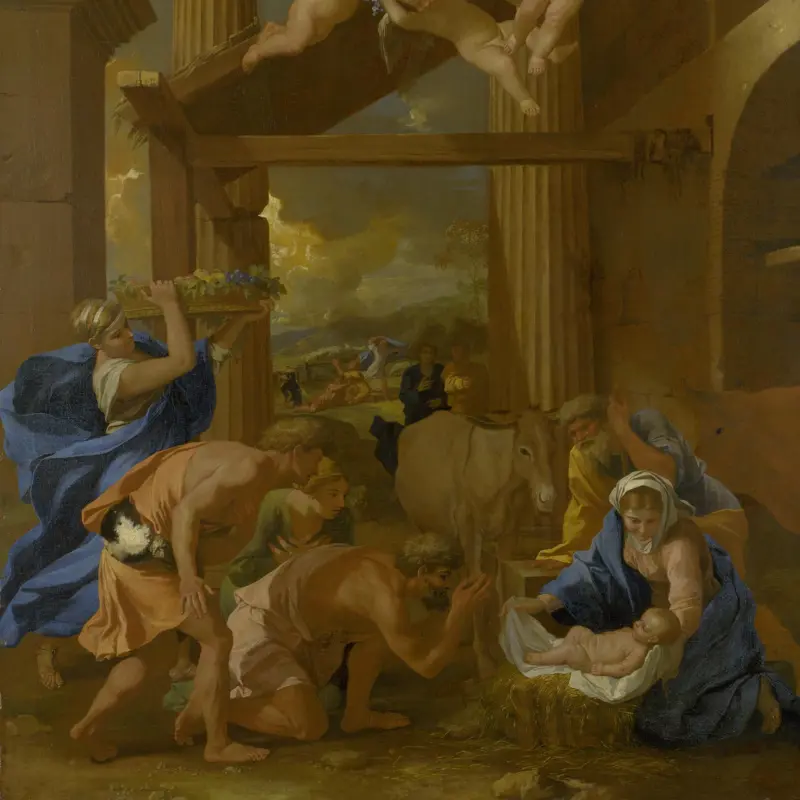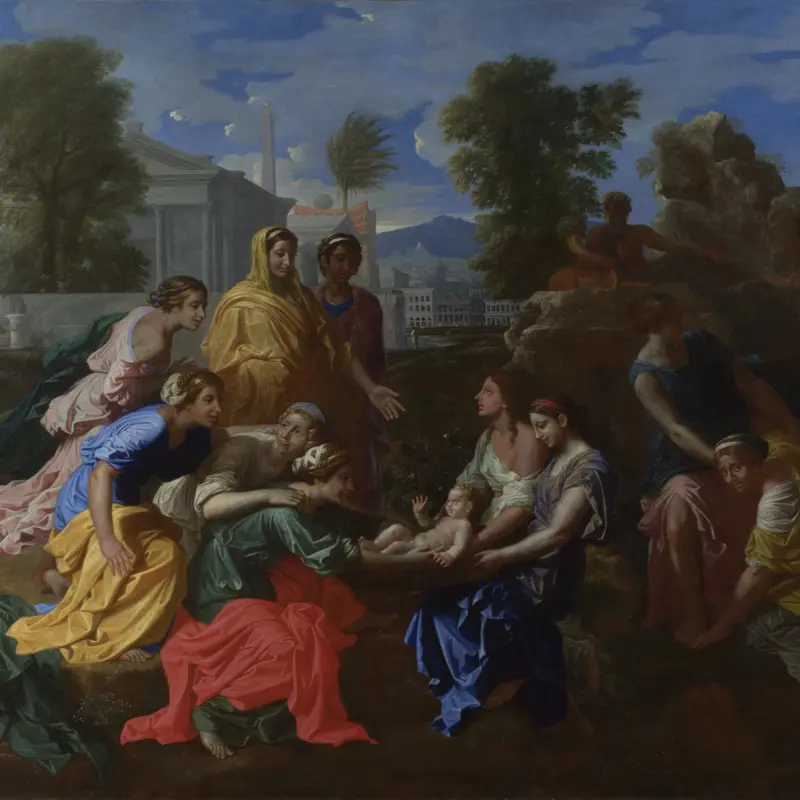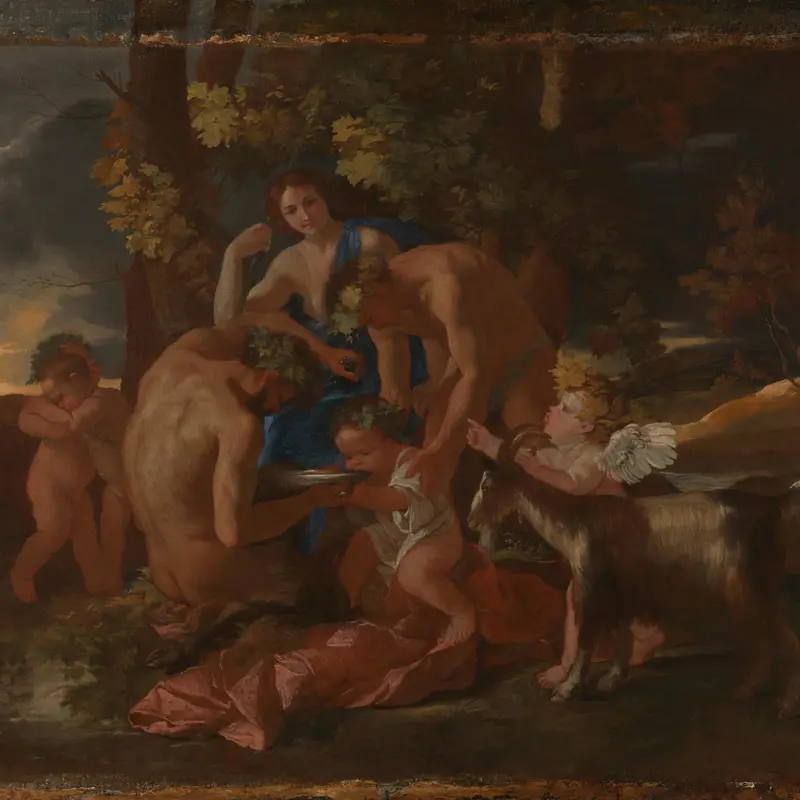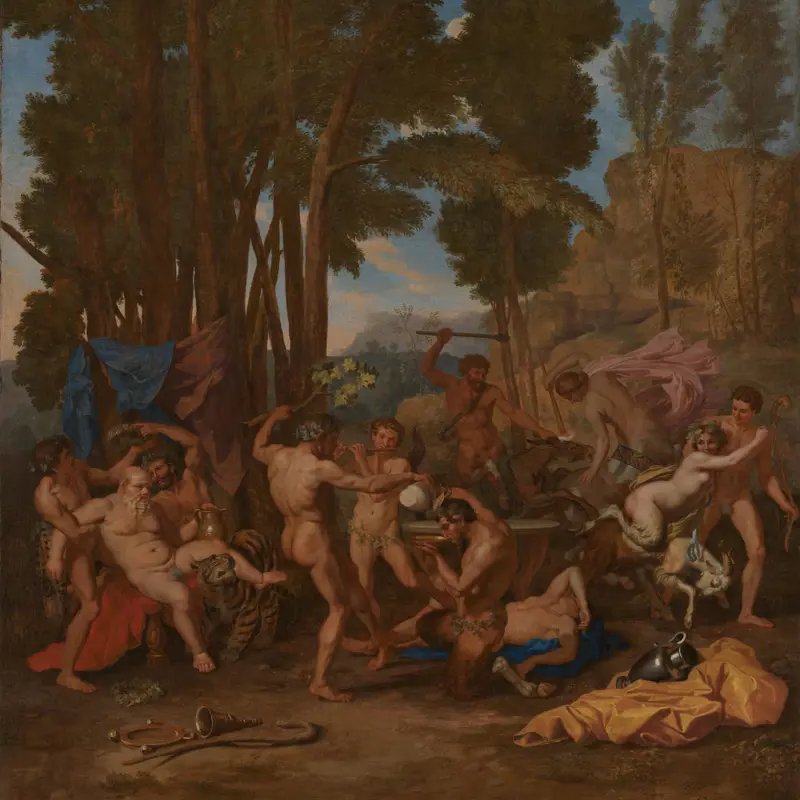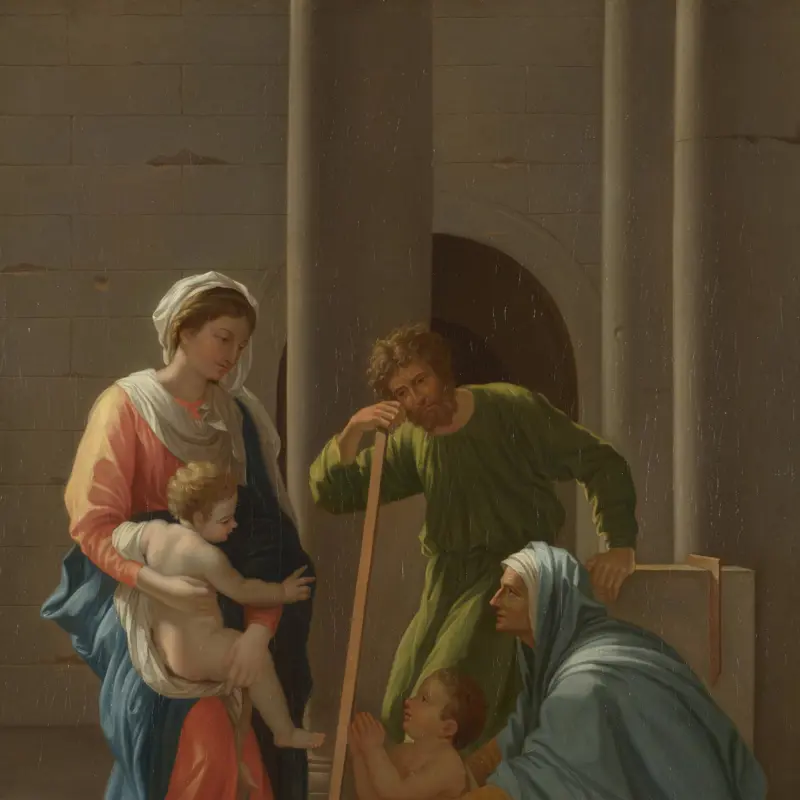Nicolas Poussin, 'The Annunciation', 1657
About the work
Overview
The Archangel Gabriel announces to the Virgin Mary that she will give birth to the Son of God. The dove of the Holy Ghost hovers above her in a bright circle of light. The Virgin, with her eyes closed and arms outstretched, accepts her role as mother of Christ. Poussin’s treatment of this subject is unusual, showing the Virgin sat cross-legged. Her cloak is usually blue, symbolising heaven, but here it is yellow, signifying hope and purity. Despite the room’s rather plain appearance, the clothing shimmers in the light shining from the left and the angel’s wings are decorated with three vibrant colours.
A wooden plaque fixed to the stone wall or parapet shows Poussin’s signature, the date 1657 and the name of Pope Alexander VII Chigi (1599–1667), who may have commissioned the painting.
Key facts
Details
- Full title
- The Annunciation
- Artist
- Nicolas Poussin
- Artist dates
- 1594 - 1665
- Date made
- 1657
- Medium and support
- oil on canvas
- Dimensions
- 104.3 × 103.1 cm
- Inscription summary
- Signed; Dated and inscribed
- Acquisition credit
- Presented by Christopher Norris, 1944
- Inventory number
- NG5472
- Location
- Room 29
- Collection
- Main Collection
Provenance
Additional information
Text extracted from the ‘Provenance’ section of the catalogue entry in Humphrey Wine, ‘National Gallery Catalogues: The Seventeenth Century French Paintings’, London 2001; for further information, see the full catalogue entry.
Exhibition history
-
2015Poussin and GodMusée du Louvre30 March 2015 - 29 June 2015
-
2023Real FamiliesThe Fitzwilliam Museum6 October 2023 - 7 January 2024
Bibliography
-
1829
J. Smith, A Catalogue Raisonné of the Works of the Most Eminent Dutch, Flemish, and French Painters: In Which is Included a Short Biographical Notice of the Artists, with a Copious Description of Their Principal Pictures […], 9 vols, London 1829-1842
-
1946Martin Davies, National Gallery Catalogues: French School, London 1946
-
1947A. Blunt, '"The Annunciation" by Nicolas Poussin', Bulletin de la Société Poussin, I, 1947, pp. 18-25
-
1947P.R. Régamy, 'La signification religieuse de l'Annociation de Poussin', Bulletin de la Société Poussin, I, 1947, pp. 27-30
-
1948T. Bertin-Mourot, 'Addenda au catalogue de Grautoff depuis 1914', Bulletin de la Société Poussin, II/31, 1948, pp. 8ff
-
1948L. Rudrauf, 'Une annociation de Nicolas Poussin', Bulletin de la Société Poussin, XX, 1948, pp. 8ff
-
1952P. Ladrué, 'La scène de l'Annonciation vue par les peintres', Gazette des beaux-arts, I, 1952
-
1955The National Gallery, The National Gallery: 1938-1954, London 1955
-
1957Martin Davies, National Gallery Catalogues: French School, 2nd edn (revised), London 1957
-
1962D. Wild, 'L'"Adoration des Bergers" de Poussin à Munich et ses tableaux religieux des années cinquante', Gazette des beaux-arts, II, 1962
-
1965J. Costello, 'Poussin's Annunciation in London', in Essays in Honour of Walter Friedländer, New York 1965, pp. 16ff
-
1966A. Blunt, The Paintings of Nicolas Poussin: A Critical Catalogue, London 1966
-
1969K. Badt, Die Kunst des Nicolas Poussin, Cologne 1969
-
1980D. Wild, Nicolas Poussin: Band I, Leben, Werk, Exkurse, Band II, Katalog der Werke, Zürich 1980
-
1992H. Wine and O. Koester, Fransk Guldalder: Poussin and Claude and French Painting of the Seventeenth Century, (exh. cat. Statens Museum for Kunst, 29 February - 3 May 1992), Copenhagen 1992
-
1993D. Carrier, Poussin's Paintings: A Study in Art-Historical Methodology, Univerisity Park PA 1993
-
1994I.G. Kennedy and S. Dickinson, 'Poussin: A Variant of the Johnson "Baptism"', The Burlington Magazine, CXXXVI/1098, 1994, pp. 612-6
-
1994P. Rosenberg, L.-A. Prat and V. Damian, Nicolas Poussin: La collection du Musée Condé à Chantilly (exh. cat. Musée Condé, Château de Chantilly, 27 September 1994 - 6 January 1995), Paris 1994
-
1994R. Verdi and P. Rosenberg, Nicolas Poussin, 1594-1665 (exh. cat. Galeries Nationales du Grand Palais, 27 September 1994 - 2 January 1995; Royal Academy of Arts, 19 January - 9 April 1995), Paris 1994
-
1995D. Mahon, 'The Written Sources for Poussin's Landscapes, with Special Reference to His Two Landscapes with Diogenes', The Burlington Magazine, CXXXVII/1104, 1995, pp. 176-82
-
1995H. Wine, 'Instruction and Delight: The Poussin Exhibitions at the Grand Palais, Paris and the Royal Academy', Apollo, CXLI/398, 1995, pp. 50-3
-
1996E. Wilberding, 'L'Annonciation de 1657', in Nicolas Poussin (1594-1665). Actes du colloque organisée au musée du Louvre…1994, Paris 1996, pp. 179-99
-
1996H. Brigstocke, 'Variantes, copies et imitations. Quelques réflexions sur les méthodes de travail de Poussin', in Nicolas Poussin (1594-1665): Actes du colloque organisée au musée du Louvre…1994, Paris 1996
-
1999J.P. Cuzin, '"La Vision de Sainte Françoise Romaine" de Nicolas Poussin', Revue du Louvre, 2, 1999, pp. 13-7
-
2000O. Bonfait and N. MacGregor, Le Dieu caché: Les peintures du Grand Siècle et la vision de Dieu, (exh. cat. Académie de France, Villa Medici, 18 October 2000 - 28 January 2001), Rome 2000
-
2001
C. Baker and T. Henry, The National Gallery: Complete Illustrated Catalogue, London 2001
-
2001H. Wine, National Gallery Catalogues: The Seventeenth Century French Paintings, London 2001
-
2006Christie, Manson & Woods, Important Old Master Pictures, London, 6 July 2006
About this record
If you know more about this work or have spotted an error, please contact us. Please note that exhibition histories are listed from 2009 onwards. Bibliographies may not be complete; more comprehensive information is available in the National Gallery Library.

